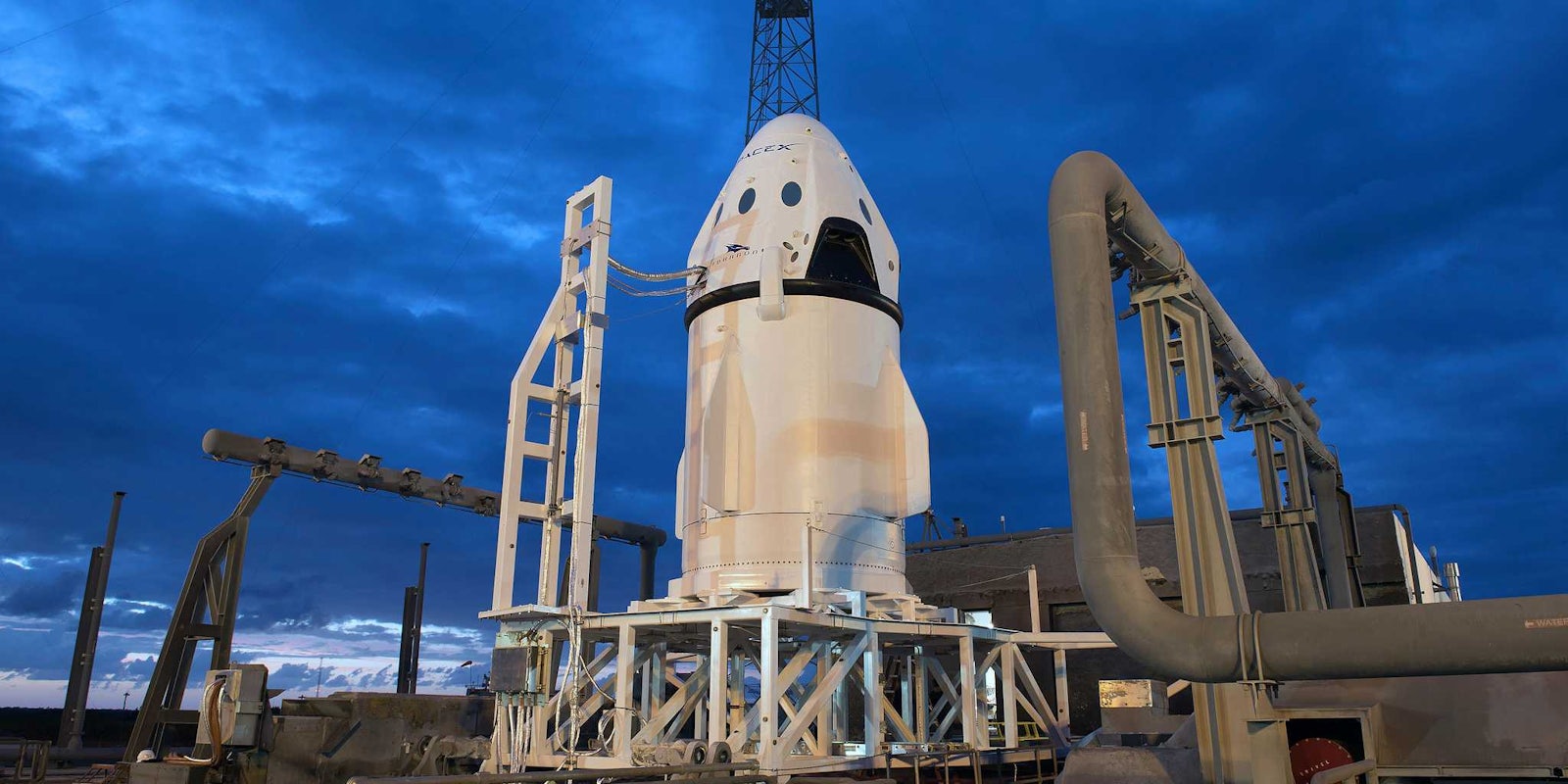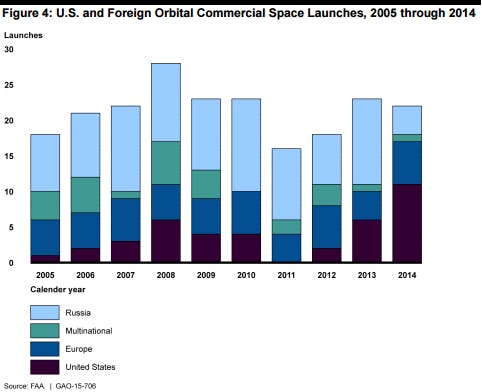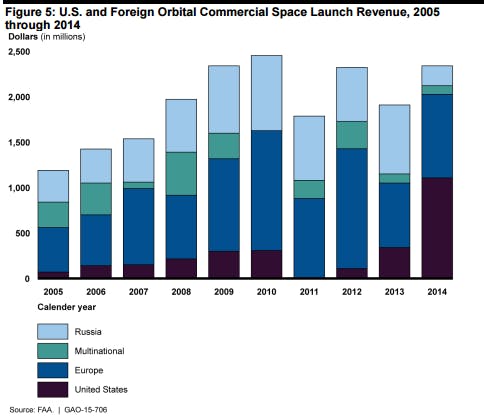Over the past four years, America’s private space industry has rapidly expanded to become the largest in the Milky Way. But the skyrocketing industry has U.S. regulators searching for ways to balance risk and reward.
In 2011, the U.S. commercial industry was all but nonexistent, with zero commercial space launches and earned zero revenue. By 2014, the industry reported $1.1 billion in revenue, almost half of the global space industry’s total. Last year, the U.S. was host to 11 commercial space launches, again just about half the world’s total, according to a new Government Accountability Office report.
The meteoric rise of U.S. commercial space flights is not all star gazing and zero-gravity high fives, however. The American expansion is posing considerable challenges to regulators, especially after three launch mishaps since October 2014, including two explosions, one crash, and one fatality.
The Federal Aviation Administration (FAA) will soon be empowered for the first time to regulate the crews and participants of commercial spaceflights, starting Sept. 30. However, officials say they are seeking detailed industry plans that follow the FAA’s recommended practices.
“If Congress does not extend the regulatory moratorium beyond September 2015,” the GAO report reads, “FAA will need to determine whether and when to regulate the safety of crew and spaceflight participants.”
While European space activity has remained consistent in recent years, Russia’s industry launches and revenue fell drastically. Earlier this year, however, NASA signed a $490 million contract with Russia to send astronauts to the International Space Station after Congress declined to fully fund NASA’s Commercial Crew Program for the fifth straight year.
NASA has invested $1.4 billion in commercial spaceflight through programs like the Commercial Cargo Program and Commercial Crew Program, which are meant to”establish safe, reliable and cost-effective access to space.”
NASA Administrator Major General Charles Bolden Jr. insisted earlier this year that without adequate congressional funding for the Commercial Crew Program, American taxpayer dollars would continue to go to overseas space programs that ultimately cost tens of millions dollars more per astronaut than commercial American programs.
“We are the country that kissed the moon,” Bolden wrote last month. “We’re the country that’s roving Mars. We’re the country that continues to reach new horizons, including most recently, Pluto. We ought be able to get our own astronauts to space.”
Read the full GAO report below:
Photo via Space X Photos/Flickr (Public Domain)




